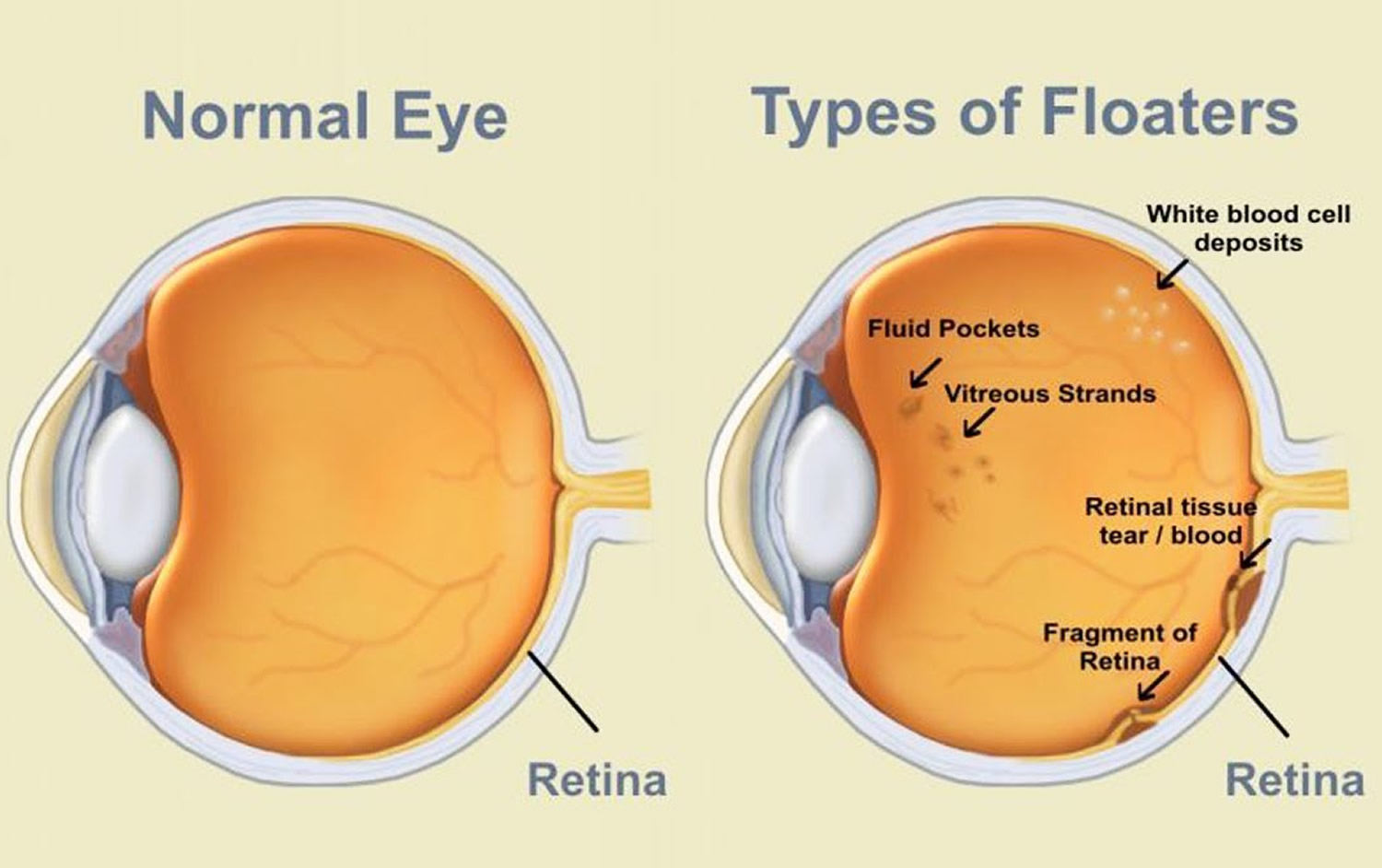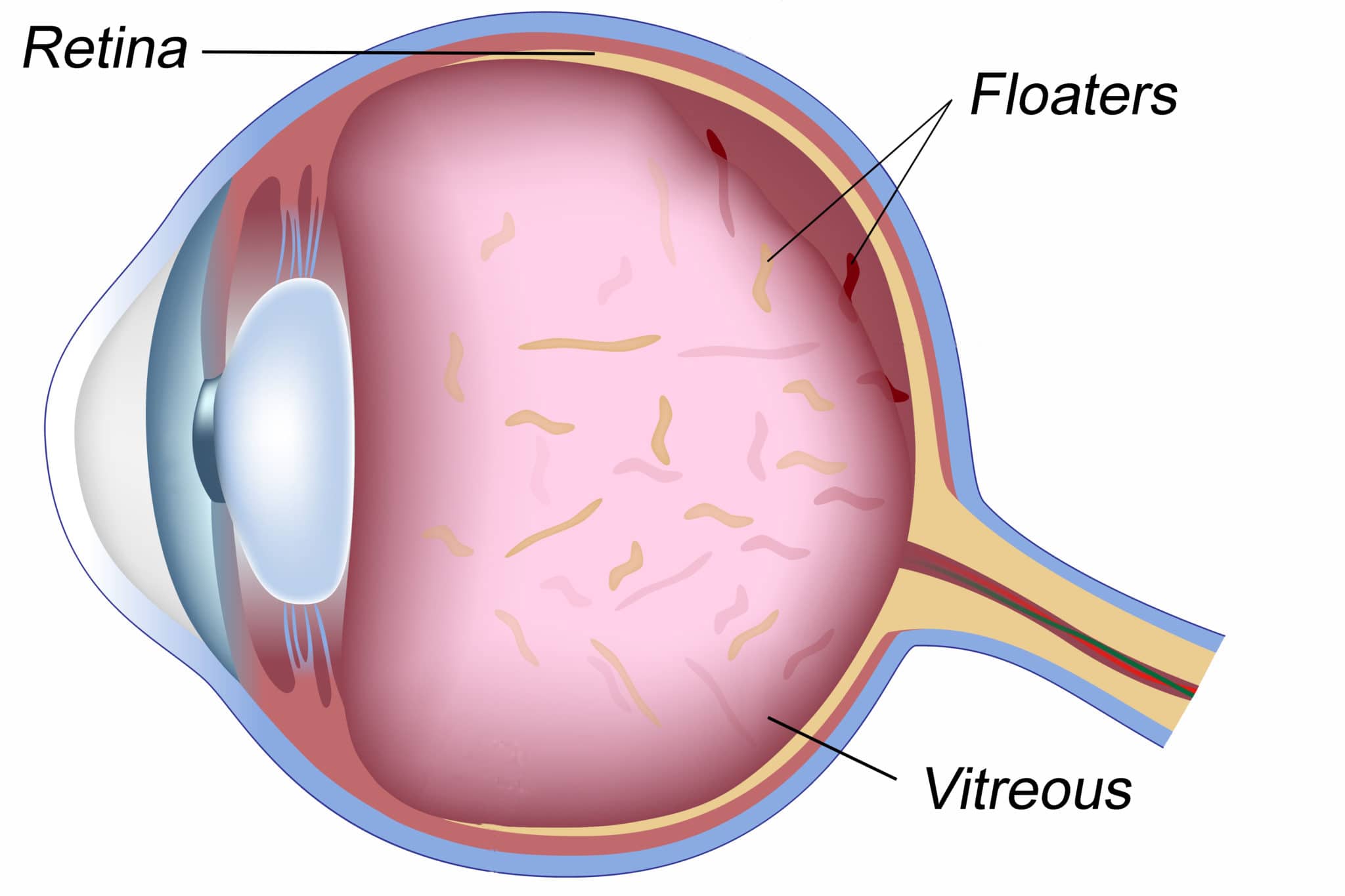Medical Definition and Causes

Floater meaning – A floater is a small, dark spot that appears in your field of vision. It is caused by a tiny piece of debris or cells floating in the vitreous humor, the gel-like substance that fills the back of your eye.
As the sun pierced the misty veil of the morning, casting ethereal shadows upon the lake, I noticed tiny specks dancing before my eyes—floaters. These enigmatic particles, like elusive whispers, seemed to hover in the watery depths. A thought struck me: what if these floaters were like the pikes in a river ( pike definition )?
Both floaters and pikes, in their own realms, are elusive and enigmatic, adding an element of mystery to their respective environments.
Floaters are usually harmless and do not require treatment. However, they can be a nuisance, especially if they are large or numerous.
Floater, a detached object suspended in a fluid, akin to the perch definition as a resting place for birds. Like a floater’s ambiguous presence, it echoes the duality of a perch, offering a temporary respite amidst life’s ceaseless currents.
Potential Causes
There are many potential causes of floaters, including:
- Age-related changes in the vitreous humor
- Posterior vitreous detachment
- Eye inflammation
- Eye trauma
- Bleeding in the eye
- Retinal tears
- Retinal detachment
Types of Floaters, Floater meaning
There are two main types of floaters: vitreous floaters and retinal floaters.
- Vitreous floaters are the most common type of floater. They are caused by tiny pieces of debris or cells floating in the vitreous humor.
- Retinal floaters are less common. They are caused by a tear or detachment of the retina, the light-sensitive tissue at the back of the eye.
Diagnosis and Treatment: Floater Meaning
/GettyImages-815630504-f75e62dfe9484406bf56c48eadbc8cbc.jpg)
Floaters can be diagnosed through a comprehensive eye exam, which includes a detailed examination of the retina and vitreous humor. Advanced imaging tests like optical coherence tomography (OCT) and fluorescein angiography may also be used to assess the extent and severity of the floaters.
Treatment options for floaters vary depending on their type, size, and severity. Laser therapy involves using a laser to target and break up the floaters, making them less noticeable. Vitrectomy is a surgical procedure that involves removing the vitreous humor and replacing it with a clear fluid, which can effectively eliminate floaters but carries a higher risk of complications.
Risks and Benefits of Treatment
- Laser therapy is generally safe, but potential risks include retinal damage, bleeding, and increased floaters.
- Vitrectomy is a more invasive procedure with a higher risk of complications, including infection, retinal detachment, and cataracts. However, it is often the only effective treatment for severe floaters that significantly impair vision.
Prevention and Management

Taking preventive measures and making lifestyle changes can help reduce the risk of developing floaters or manage existing ones. Regular eye exams are crucial for early detection and monitoring.
Maintaining a healthy lifestyle, including a balanced diet and regular exercise, can contribute to overall eye health. Consuming foods rich in antioxidants, such as fruits and vegetables, can help protect the eyes from oxidative damage.
Dietary Changes
- Increase intake of fruits and vegetables, especially leafy greens and citrus fruits.
- Include foods rich in antioxidants, such as berries, nuts, and fish.
- Consider a diet low in processed foods, sugary drinks, and unhealthy fats.
Lifestyle Modifications
- Wear sunglasses with UV protection to shield eyes from harmful sunlight.
- Quit smoking, as it damages blood vessels in the eyes and contributes to eye floaters.
- Maintain a healthy weight to reduce the risk of conditions like diabetes, which can affect eye health.
Regular Eye Exams
Regular eye exams are essential for early detection and monitoring of floaters. An ophthalmologist can examine the eyes, including the vitreous humor, to determine the cause and severity of floaters.
If floaters are caused by an underlying medical condition, prompt treatment can prevent further complications. In some cases, laser treatment or surgery may be recommended to remove floaters that significantly affect vision.
In the realm of basketball, a floater is a graceful maneuver where a player releases the ball gently, hovering over the rim like a butterfly. This technique, often employed to evade taller opponents, is a testament to the game’s artistry.
From its origins in streetball to its refined execution on the court, the basketball floater embodies the essence of floater meaning: a delicate balance between precision and finesse.
Like a leaf dancing in the breeze, a floater gracefully floats over the rim, a testament to skill and finesse. But beyond the realm of basketball’s artistry lies another maneuver, equally captivating: the pike basketball meaning. A symphony of athleticism, the pike involves leaping into the air and extending the legs forward, mimicking the grace of a soaring bird.
Yet, as the floater symbolizes elegance, the pike embodies power and precision, a reminder that the game of basketball is a tapestry woven with both beauty and athleticism.
A floater, like a leaf dancing on the wind, can take many forms. In the realm of basketball, it transforms into a delicate shot, the basketball floater , where the ball floats gently towards the basket, a testament to the finesse and skill of the player.
Yet, beyond the court, the essence of a floater remains, a symbol of the ethereal and the ephemeral, reminding us that even in the most fleeting moments, there lies a touch of beauty and grace.